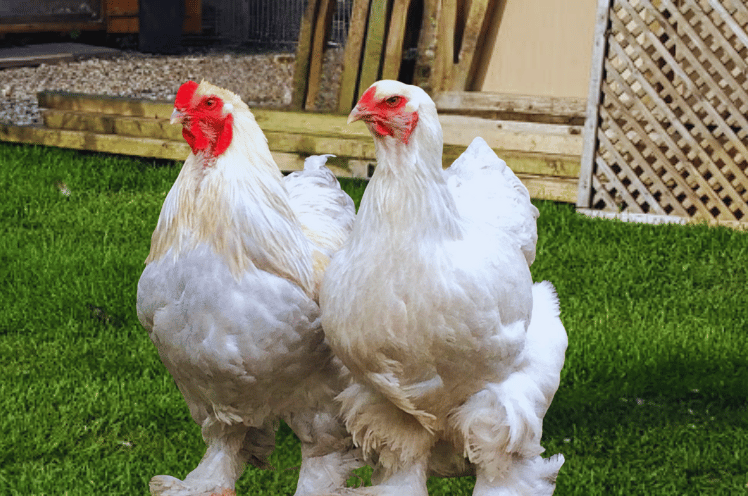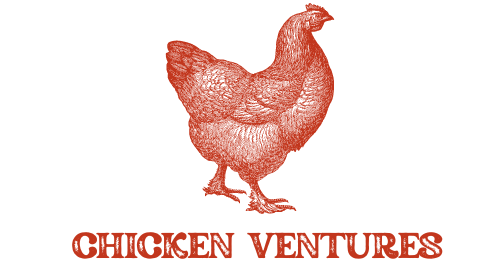Isabella Brahma Chicken, also known as Brahmas, exist in the top tier of backyard breeds. They are among the friendliest and most abundant breeds. They are very calm and easy to get along. Here is everything you need to know about the magnificent Isabella Brahma Chicken!
What is Isabella Brahma chicken?
In the middle of the 1800s, Americans created a type of chicken known as Isabella Brahma hens. Asia is where its roots lie. Because Brahmas are known for being big, it’s not a surprise that they were first bred to be game birds.
Also, if you think their eggs are small, you might be surprised to learn that they lay pretty good ones. Even though they look big, Brahmas are actually gentle giants.

Isabella Brahma Chicken: pros and cons
As with any animal, Isabella Brahma have their pros and cons. Firstly, they are friendly and easygoing, and they make great pets for the backyard.
PROS
- Good egg layers
- Produce a lot of meat.
- Friendly, gentle, and calm companion birds
- Heritage breed
- Tolerates confinement and enjoys free range
- Can’t fly far; easy to contain
- The size deters aerial predators.
- Healthy breed
- Very cold-hardy
- Great winter egg layers
CONS
- Does not tolerate heat.
- Feathered legs can cause health problems.
- Consumes a lot of food
- Hens can be broody.
- Hens may kill or squash eggs and chicks by mistake.
- Because they can’t fly or run fast, land predators find them easy prey.
Isabella Brahma Chicken Characteristics
There is a lot of disagreement about where Isabella Brahma came from; their family tree isn’t well known, and the breed had twelve different names at one point! These names included Shanghai, Chittagong, Cochin China, and Brahma Potrac, among others. I guess the people who first bred the Brahma wanted to make foreign chickens more popular so that they could sell them for more money.
Chickens brought to the US from Shanghai gave rise to the breed we know today as the Isabella Brahma. These chickens were probably Cochins, but many places claim to have given rise to the Brahma. Chittagong fowl from Bangladesh may have crossed with Chinese chickens to create the Isabella Brahma. They could have also been Malay birds with Brahma blood. Despite this, the US quickly standardized the breed. A group of chicken judges in Boston named the breed the “Brahmaputra” after the river in Bangladesh they believed it originated from.
The author of Miner’s Domestic Poultry Book, B. Miner, wrote “Brahma” instead of “Brahmaputra.” because, maybe he didn’t have room for the whole word. The name stayed.
History of Isabella Brahma Chicken
The Isabella Brahma was the first type of Brahma to be made. In 1874, the American Standard of Perfection included it. People in the United Kingdom created the Dark Brahma after a chicken grower named George Burnham sent some of his birds to Queen Victoria of England. The queen liked these birds a lot. These chickens quickly gained popularity in England as Brahmas were one of the most well-known breeds.
There were some things that made the early Light and Dark Brahmas different. Breeders bred Light Brahmas to be meat birds, resulting in them being about a pound heavier than Dark Brahmas, also used for meat but with a darker color. The Dark Brahma designs were harder to make, but the birds with three silver pencils were very pretty, and people who sold chickens wanted them.
In 1874, the American Poultry Association said that the Light and Dark Brahma were acceptable breeds. In 1924, the Buff Brahma came out. Even though Brahmas made chicken breeding more famous in the US and UK (what we now call “Hen-Fever”), they quickly fell out of favour when other meat- and egg-laying breeds came out. It became hard to find Brahmas and many other Asian breeds. Brahmas are gaining popularity again because they are a heritage breed.
| Breed Name | Isabella Brahma Chicken |
| Breed Type | Dual-purpose (meat and eggs) |
| Temperament | Laid-back, docile, easygoing |
| Eggs Per Year | 150-200 |
| Eggs per Week | 3-4 |
| Egg Size | Medium |
| Egg Color | Brown |
| Lifespan | 5-8 years |

Isabella Brahma Chicken Breed Standard
The chicken is the second-biggest type of chicken, after the Jersey Giant. They are about 30 inches tall. Their pea combs should be neat. Their eyes are a deep shade of dark brown. It’s called a “beetle brow” because Brahmas’ brows stick out a bit over their eyes, with their heads being very broad. However, their beaks are not very long.
Their bodies and chests are big and wide. It is said that their bodies slowly slope and their necks are “oblong” and egg-shaped. They look like very strong birds with a lot of weight. From head to toe, Isabella Brahma hens are covered in feathers, even on their legs and feet.
As per the American Poultry Association, there are three colors of large brahmas: light, dark, and buff.
The Isabella Brahma rooster is mostly white with a grey underside. His flanks, tail, and neck are all black, though. The black and white feathers look beautiful next to each other. Hens have the same color.
Isabella Brahma and Buff Brahma look a lot alike. The only thing that makes them different is that their feathers are buff, which is a nice shade of orange-brown.
Here in the US, these are the only three colors that are allowed. But in Australia, they also have partridge, blue, black, and striped brahmas.

Temperament of Isabella Brahma Chicken
Some people think that Brahma are scary, but these huge birds are actually very friendly. Because they’re big, they’re not easily scared. Brahmas are sturdy and sure of themselves, as well as friendly, making them great family pets.
The Isabella Brahma are not at all flighty. They have a hard time flying and won’t jump over walls. Because of this, they do pretty well when kept inside, though I always say to give your chickens as much room as you can, especially when they’re so big!
Isabella Brahma doesn’t talk much, but roosters will crow because they’re roosters. Their owners love them very much, so if you have a group of Brahmas, you can expect to see some happy chickens when you get home. Let them eat, and they’ll be even better.
Egg Production of Isabella Chicken
Before they were known for laying eggs in the winter, Isabella Brahma hens were raised for meat. Every week, a hen will lay three to four medium-sized eggs.
At about 6 to 7 months, Brahmas will start laying eggs, which is a little later than breeds that were made to lay eggs.
Compared to breeds specifically bred to lay eggs, Brahma chickens lays a good number of eggs, albeit not as many. Isabella Brahma hens are most active in the cooler months, especially from October to May, but this can be different for each person. Choose a Brahma hen if you want one that will keep laying eggs even when it gets cold and the light goes out.

Egg Color
An Isabella chicken egg has a light brown or creamy brown color. You’d also expect them to be bigger based on the size of the hens’ bodies.
Meat
Isabella Chicken is something you can eat. Their large, heavy bodies provide a lot of meat. Chickens gained popularity as table birds during the 1850s to the 1930s.
Isabella Brahma is good for making chicken breasts, but they need some time to grow. They reach full maturity about a year later. They kill most Brahmas at 8 to 10 weeks old, long before they reach their full potential. The meat they make is juicy and full of flavor.
Common health issues
To stay healthy in Brahmas, you should keep an eye out for bugs and bumblefoot. In every other way, Isabella Brahma Chickens are a very healthy breed of chicken.
The feathers on Isabella Brahma legs are thick and tightly connected. This makes it simple for mites, lice, and ticks to get on your chickens. A lot of people have scaly leg mites. It’s not always easy to tell when a Brahma has one of these bugs, so make sure you check their legs often. If you see specific types of mites on your Brahma, you may need to use leg soaks or medicine to get rid of them and help the cuts they cause heal.
Fleeced-leg chicken breeds hate having their feet wet. Brahma is no different. If your feet are cold and wet in the winter, frostbite can happen. Make sure your Brahmas don’t live in a wet area, and dry their feet if it gets too cold and wet.
Isabella Brahma chickens also get bumblefoot easily because they are so big. This typically occurs when the chicken steps on something that breaks its skin. For example, stepping on a splinter, rock, or wire can cause a bumblefoot wound. The foot pad develops a hard center. If left untreated, bumblefoot can be fatal. Brahmas are more likely to get cuts on the bottoms of their feet because they stand on hard and flat ground.
If you notice the symptoms early, you may be able to treat your chicken for bumblefoot on your own. If not, take it to the vet.

